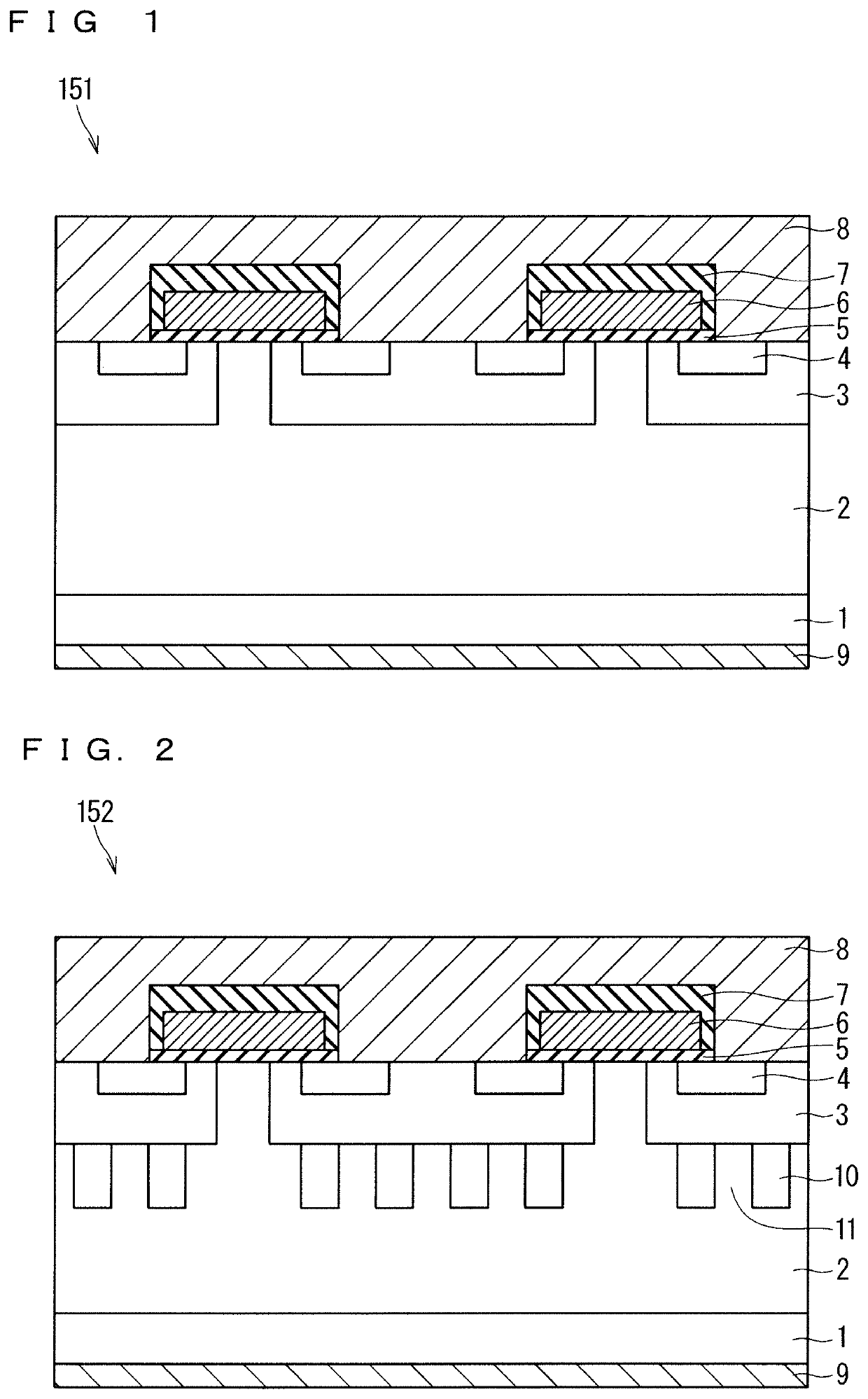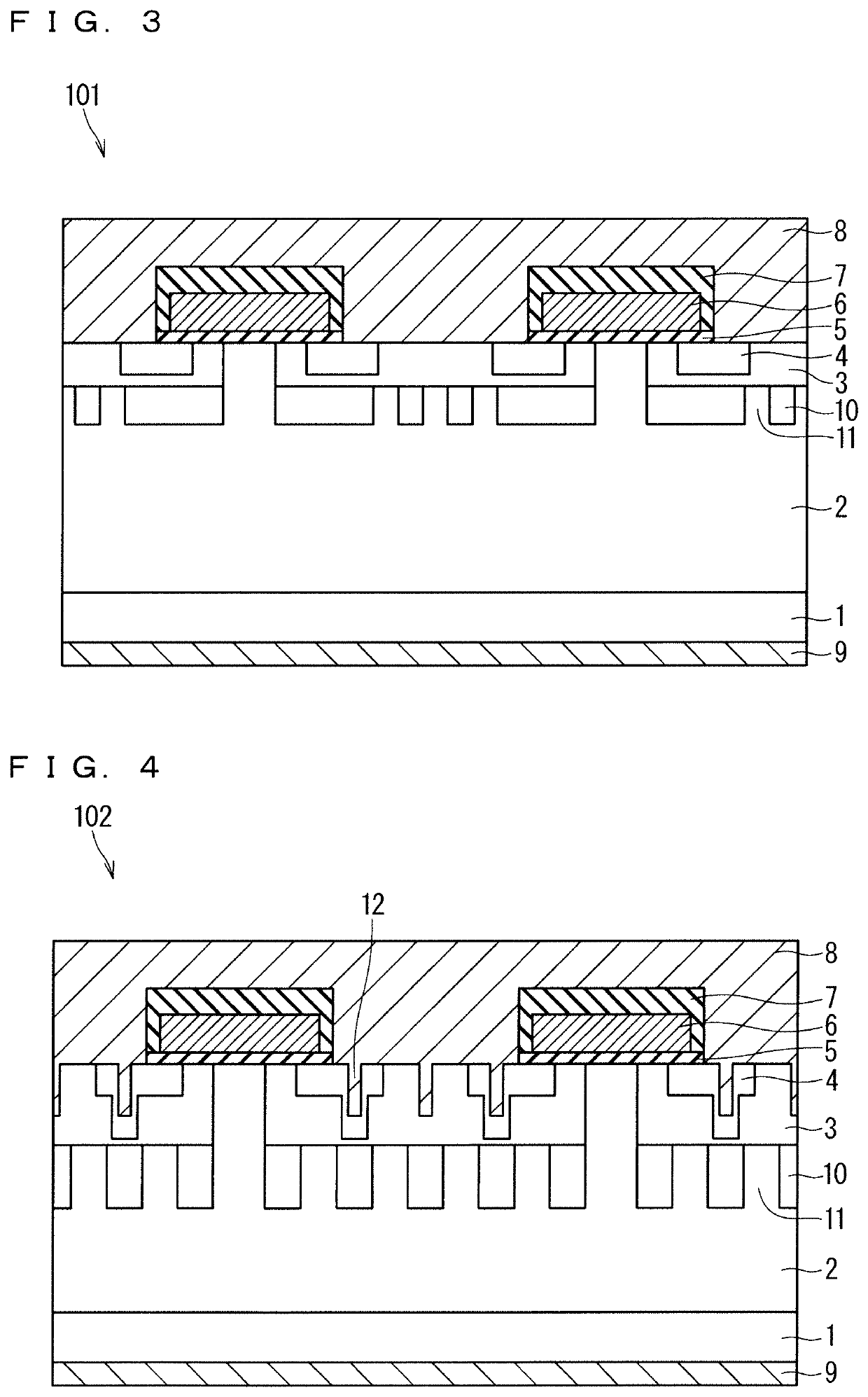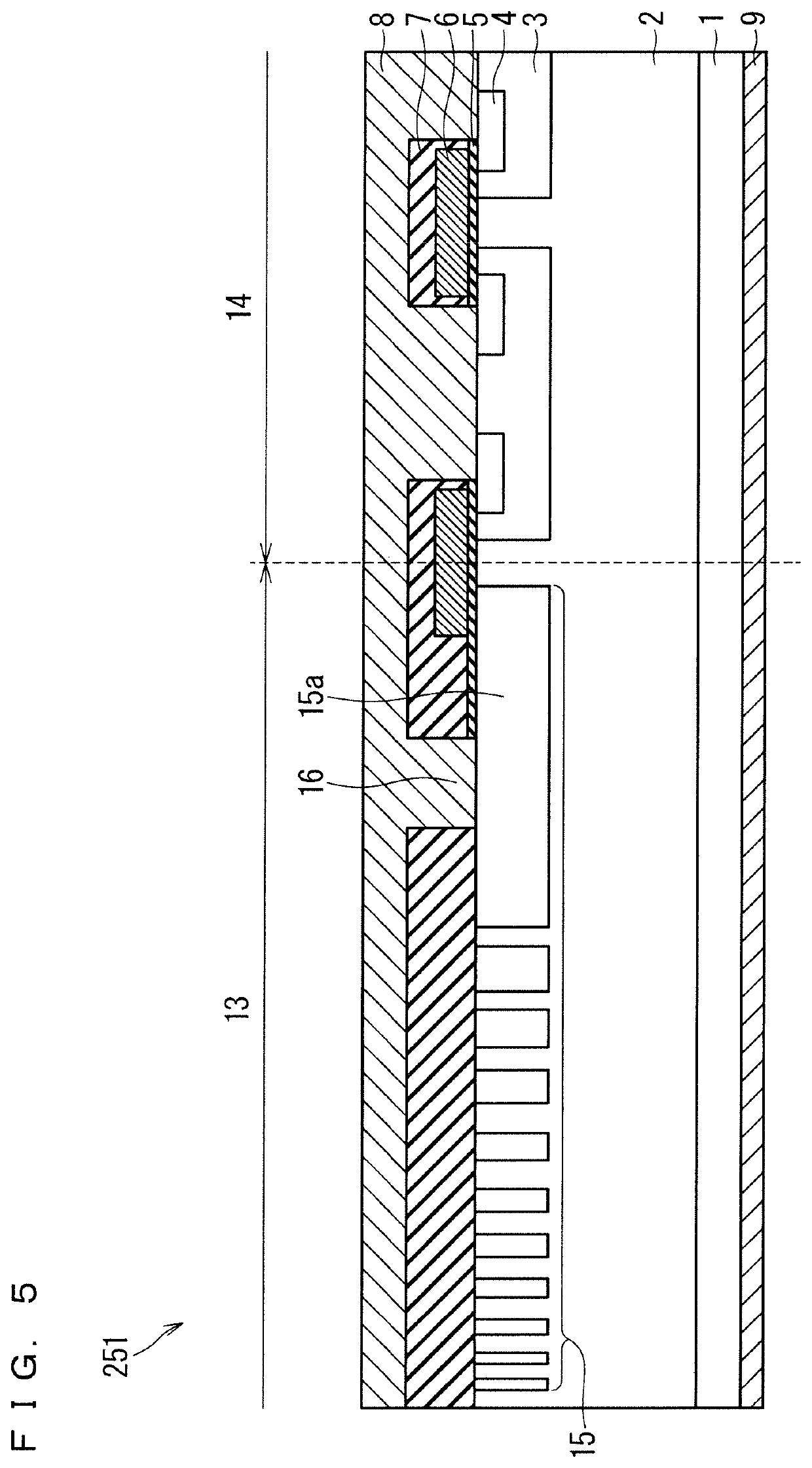SiC-MOSFET
a technology of mosfet and mosfet plate, which is applied in the direction of diodes, semiconductor devices, electrical apparatus, etc., can solve the problems of large number of stacking faults, significant deterioration of mosfet and so as to reduce the withstand voltage, and increase the current of the body diodes
- Summary
- Abstract
- Description
- Claims
- Application Information
AI Technical Summary
Benefits of technology
Problems solved by technology
Method used
Image
Examples
modification example
B-3. Modification Example
[0045]FIG. 7 is a cross-sectional view of an SiC-MOSFET 202 according to a first modification example of the embodiment 2. The SiC-MOSFET 202 is different from the SiC-MOSFET 201 according to the embodiment 2 in that the concave portion 12 is formed in the upper surface of the source region 4 in the active region 14 and the source contact portion of the base region 3 and the concave portion 22 is formed in the upper surface of the guard ring 15a on the innermost peripheral side in the outer peripheral region 13. The active region 14 of the SiC-MOSFET 202 has the same configuration as the SiC-MOSFET 102 according to the modification example of the embodiment 1. The gate insulating film 5, the interlayer insulating film 7, or the source electrode 8 is put into the concave portion 22.
[0046]FIG. 8 is a cross-sectional view of an SiC-MOSFET 203 according to a second modification example of the embodiment 2. In the SiC-MOSFET 203, the width of the concave portion ...
PUM
 Login to View More
Login to View More Abstract
Description
Claims
Application Information
 Login to View More
Login to View More - R&D
- Intellectual Property
- Life Sciences
- Materials
- Tech Scout
- Unparalleled Data Quality
- Higher Quality Content
- 60% Fewer Hallucinations
Browse by: Latest US Patents, China's latest patents, Technical Efficacy Thesaurus, Application Domain, Technology Topic, Popular Technical Reports.
© 2025 PatSnap. All rights reserved.Legal|Privacy policy|Modern Slavery Act Transparency Statement|Sitemap|About US| Contact US: help@patsnap.com



